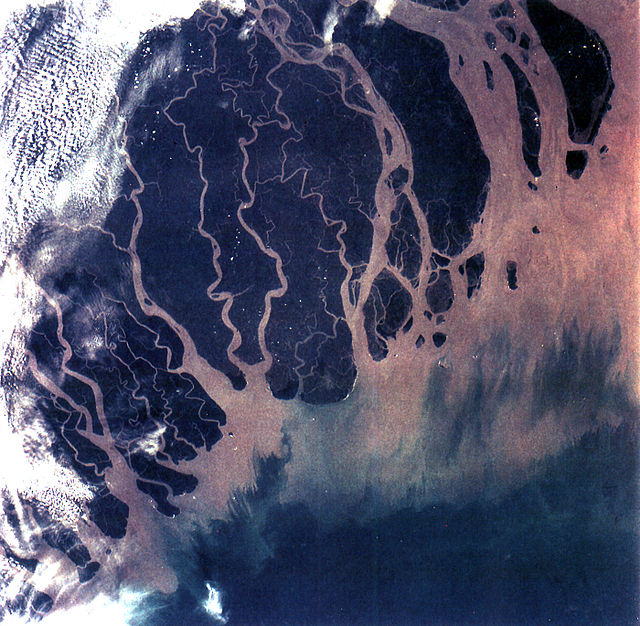River delta
landform that is formed at the mouth of a river From Wikipedia, the free encyclopedia
Remove ads
A river delta is a landform shaped like a triangle. It is where the mouth of a river flows into an ocean, or even into a desert. It is formed by sediment carried by the river being deposited in the wider mouth. This happens because the water moves less quickly there.



Over time, the delta forms a series of fingers: places where the water flows, and places above water where plants grow. As time passes, these "fingers" change their position. The landform is typical of the tropical rivers of the past as well as the present.
The word "delta" comes from the Greek letter delta, Δ , because the deltas are shaped like the letter. A river delta can cover just a few square miles, or an area of hundreds or thousands of square miles of land.
There have been times in the past when the tropical rivers were larger than today. The South of England was, in the Jurassic period, part of a larger continent. There is today just a remnant of this huge tropical river. The mud from this river is like huge fingers, with gravel between the fingers. This can be seen in quarries where building materials are sorted for sale.[1][2]
The deposition of mud and sand causes an alluvial fan, which is the name given to the phenomenon.[3]
Remove ads
Other websites
- Louisiana State University Geology Archived 2006-01-28 at the Wayback Machine - World Deltas
References
Wikiwand - on
Seamless Wikipedia browsing. On steroids.
Remove ads
